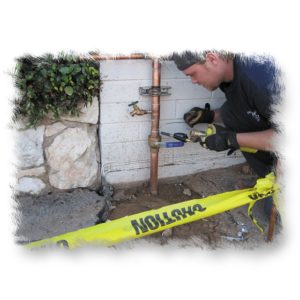If you are a homeowner, chances are you have had to deal with your share of plumbing problems. While you can always call Diamondback Plumbing to take care of your plumbing needs read on for a few handy tools that every home should have on hand in case of plumbing emergencies.
Plunger
A plunger is the most basic plumbing tool you can keep in your arsenal. Pretty much everyone has used one of these before. Plungers consist of a rod with a rubber cup-like device on the end. The cup is designed to create a seal on a drain, most commonly in a toilet.
The plunger is used to create a pushing and pulling action in a clogged pipe. In most cases, this is a quick and easy fix for general debris buildup in a pipe that is preventing water flow. Most clogs are simply caused by detritus that has caught on the side of the drain and cannot be pushed down. The plunger's sucking action can usually pull the obstruction off of whatever is catching it, giving it another chance to flow freely down the drain. The plunger presents an easy fix for the most common plumbing issue.
Complete Set Of Wrenches
 Wrenches are used in almost every aspect of plumbing. Whether you are fixing a leaky faucet, taking apart pipes under your house, or anywhere in between, chances are there will be a bolt that needs a wrench to be loosened or tightened. A set of wrenches is an essential aspect of any toolbox, but is especially important for plumbing. (Channelocks)
Wrenches are used in almost every aspect of plumbing. Whether you are fixing a leaky faucet, taking apart pipes under your house, or anywhere in between, chances are there will be a bolt that needs a wrench to be loosened or tightened. A set of wrenches is an essential aspect of any toolbox, but is especially important for plumbing. (Channelocks)
Drain Snake
While a plunger provides a quick and easy fix for most clogs, some clogs are too extreme for a simple plunger to handle. If your drain is seriously stuck, and neither a plunger nor a bottle of drain cleaner can make it drain properly, a snake is required for the next step.
A snake is a flexible but strong metal device designed to be wound out into a drain and dig through obstructions. While these machines will take care of your problem they will also damage your piping and make you problem much worse if you are not experienced. Too many times we have seen where the customer has went to Home Depot to rent a machine pay upwards of 50.00 only to damage the piping and make an extreme mess of black sludge inside their cabinetry. These machines can cause injury if not properly used and furthermore if you damage or kink the inner core cable which is very easy to do you will get charged additional cost from the rental facility.
Do not waste your time and money attempting to rent equipment and do it yourself – in most cases the cost is only an additional $40-50 dollars more to have a professional handle it.
If you need emergency plumbing assistance, get in touch with Diamondback Plumbing today.
For over 20 years, Diamondback Plumbing has been the local leading plumbing service company that has established themselves as the most trusted plumber in Phoenix. We are well known for providing our residential and commercial customers great service and reasonable pricing.
DiamondBack Plumbing
17423 N 25th Ave
Phoenix, AZ 85023
(602) 674-3255
https://goo.gl/maps/ZvavNnXN5nv
https://goo.gl/FnxR85
https://goo.gl/GJ5dZr
The following post Top Plumbing Tools Every Home Needs To Have on Hand was first published on owner of Diamondback Plumbing Steve Herzog
Top Plumbing Tools Every Home Needs To Have on Hand first appeared on:
Diamondback Plumbing
17423 N 25th Ave
Phoenix, AZ 85023
(602) 674-3255


